Amidst my extensive experience in the realm of software development, I’ve encountered a diverse array of documentation practices, each with its unique strengths and shortcomings. Some teams diligently employed design intake forms, capturing the essence of user experiences and expectations. Yet, I’ve also come across individual data dictionaries that, while rich in technical details, lacked a bridge to the actual user interface and experience.
On the flip side, technical documentation, such as API Swagger files or system architectures, provided a robust foundation but often lacked crucial annotations or references to corresponding data dictionaries. Additionally, some teams presented detailed design documents that, unfortunately, lacked explicit connections to business rules, form validation, and user flow logic. This resulted in inconsistent features from one aspect to another, highlighting the critical need for comprehensive and interconnected documentation that harmonizes technical depth with a user-centric approach.
The importance of well-documented requirements cannot be overstated as they serve as the backbone of a project, offering a roadmap that guides the development team through the intricate maze of functionalities and features. One often-overlooked facet of this documentation is its consistent maintenance, bolstered by robust version control systems.
Let’s delve into the compelling reasons behind the need for meticulously documented requirements and the critical role of version control in ensuring their efficacy.
Clarity and Explicit Visibility for All Ranks
The BRD acts as a communication catalyst, elevating understanding within the product hierarchy. It goes beyond providing insights solely to the project team, extending its reach to all ranks of product executives. This clarity ensures informed decision-making across all levels, aligning stakeholders with project goals and requirements.
Unified Source with Version Control
Operating as the project nucleus, the BRD consolidates vital information into one accessible hub. It transcends the limitations of a static document, evolving into a living record updated in real-time. Embracing version control ensures seamless tracking of requirements evolution, providing an accurate representation aligned with the latest insights.
Integration with Project Tools
Seamless integration with tools like Jira enhances collaboration and project visibility. The BRD captures Jira epics and stories directly within the document, adapting to various environments, whether in Confluence or an alternative system. This integration streamlines processes, ensuring a comprehensive view of the project for all stakeholders.
Tailored Flexibility for Your Project
Acknowledging project uniqueness, the BRD template offers versatility. It allows modification based on specific project needs, ensuring a customizable framework that aligns with diverse requirements. This tailored flexibility ensures that the document remains relevant and adaptable to the nuances of each project.
Streamlined Collaboration between Product Managers and Designers
The BRD bridges the communication gap between product managers and designers, enabling seamless collaboration. With detailed instructions on user flows, content structure, and elements like fields and forms, the document empowers product managers to lead in designing logical user flows and comprehensive copy strategies.
Design Tools Integration
Facilitating a seamless connection between the BRD and design elements, the template hosted in Confluence accommodates integration with design tools like Figma. This ensures that design iterations align with evolving project requirements, creating a harmonious link between documented requirements and visual representation.
Centralized Copy Management
The BRD establishes a singular source for unified copy management, consolidating all written content, including system and error messaging. This centralized repository simplifies textual element management, ensuring consistency across the entire system, from user interfaces to error prompts.
Unearth Uncovered Scope
Often, project requirements hide beneath the surface. Documented requirements act as tools to unearth this hidden scope, incorporating specific pre- and post-conditions. This meticulous detailing ensures a holistic understanding, minimizing the risk of surprises and last-minute changes.
Seamless Collaboration and Communication
Documented requirements serve as a common language, fostering seamless collaboration among stakeholders. Consistent maintenance with version control is crucial for tracking changes and maintaining clear communication, reducing misunderstandings and potential roadblocks.
Traceability for Effective Decision-Making
Documented requirements with version control offer traceability, enabling teams to understand the evolution of decisions and modifications. This comprehensive history empowers teams to make informed decisions about future enhancements, feature additions, or necessary course corrections.
Regulatory Compliance and Auditing
In industries with stringent regulatory requirements, maintaining comprehensive and version-controlled documentation is a necessity. Version control ensures the integrity of documentation, providing a reliable trail for audits and showcasing adherence to regulatory standards.
Mitigating Project Risks
Documented requirements, coupled with version control, act as a risk mitigation strategy. When changes are introduced, having a clear record helps assess the impact on the project, providing a proactive approach to risk management and allowing teams to navigate uncertainties with agility.
In conclusion, the need for well-documented requirements goes beyond mere project initiation; it extends to their consistent maintenance with robust version control. The benefits are manifold, from uncovering hidden scope and fostering collaboration to providing traceability for effective decision-making and mitigating project risks. Embracing this approach ensures that the documentation remains not just a static artifact but a living, breathing guide that propels the project towards success.
You are welcome to grab my FREE Business Requirements Template.

This product uses a default checkout process, however, we will not ask for your payment, only for your email address. After submitting the form, you will receive an email to the address you provided with a download link to the product or multiple links if the product contains multiple files. We guarantee file safety! We will never share your email address with or sell it to any third party.



No responses yet